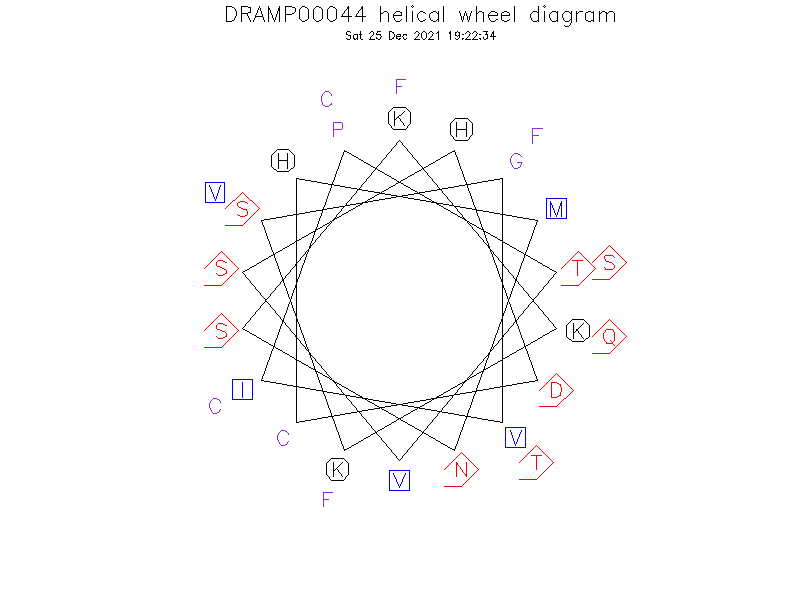General Information
-
DRAMP ID
- DRAMP00044
-
Peptide Name
- Bacteriocin nukacin (Nukacin 3299; Simulancin 3299)
-
Source
- Staphylococcus simulans
-
Family
- Belongs to the type A lantibiotic family (Class I bacteriocin)
-
Gene
- nukA
-
Sequence
- KKKSGVIPTVSHDCHMNSFQFVFTCCS
-
Sequence Length
- 27
-
UniProt Entry
- E0WX65
-
Protein Existence
- Protein level
Activity Information
-
Biological Activity
- Antimicrobial, Antibacterial
-
Target Organism
- No MICs found in DRAMP database
-
Hemolytic Activity
-
- No hemolysis information or data found in the reference(s) presented in this entry
-
Cytotoxicity
-
- Not included yet
-
Binding Target
- Not found
Structure Information
-
Linear/Cyclic
- Not included yet
-
N-terminal Modification
- Not included yet
-
C-terminal Modification
- Not included yet
-
Nonterminal Modifications and Unusual Amino Acids
- Not included yet
-
Stereochemistry
- Not included yet
-
Structure
- Not found
-
Structure Description
- Not found
-
Helical Wheel Diagram
-
PDB ID
- None
-
Predicted Structure
- There is no predicted structure for DRAMP00044.
Physicochemical Information
-
Formula
- C132H204N36O38S4
Absent Amino Acids
- AELRWY
Common Amino Acids
- S
Mass
- 3031.53
PI
- 8.66
Basic Residues
- 5
Acidic Residues
- 1
Hydrophobic Residues
- 7
Net Charge
- +4
-
Boman Index
- -32.5
Hydrophobicity
- -0.011
Aliphatic Index
- 46.67
Half Life
-
- Mammalian:1.3 hour
- Yeast:3 min
- E.coli:2 min
Extinction Coefficient Cystines
- 125
Absorbance 280nm
- 4.81
Polar Residues
- 11
DRAMP00044

Comments Information
Function
- Lanthionine-containing peptide antibiotic (lantibiotic) active on Gram-positive bacteria. The bactericidal activity of lantibiotics is based on depolarization of energized bacterial cytoplasmic membranes, initiated by the formation of aqueous transmembrane pores (By similarity).
Biophysicochemical properties
- pH dependence (Optimum pHs for antimicrobial activity are 3.0 and 6.0. Activity is reduced by 50% at alkaline pHs 9.0 and 11.0); Temperature dependence (No change in antimicrobial activity between 80 or 100 degrees Celsius after 15 minutes, but reduction in 50% antimicrobial activity at 121 degrees Celsius after 15 minutes).
ptm
- Maturation of lantibiotics involves the enzymic conversion of Thr, and Ser into dehydrated AA and the formation of thioether bonds with cysteine. This is followed by membrane translocation and cleavage of the modified precursor (By similarity).
Literature Information
- ·Literature 1
-
Title
- Nukacin 3299, a lantibiotic produced by Staphylococcus simulans 3299 identical to nukacin ISK-1.
-
Pubmed ID
- 20627619
-
Reference
- Vet Microbiol. 2010 Nov 20;146(1-2):124-131.
-
Author
- Ceotto H, Holo H, da Costa KF, Nascimento Jdos S, Salehian Z, Nes IF, Bastos Mdo C.

